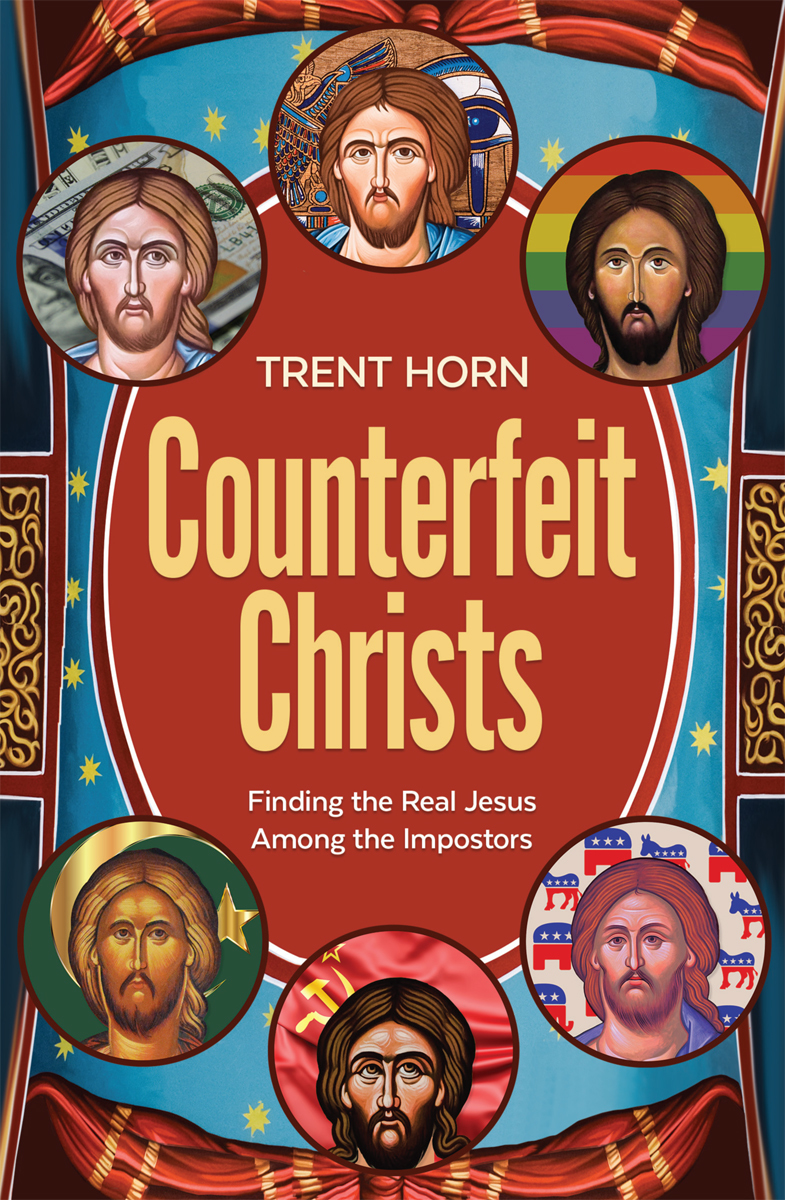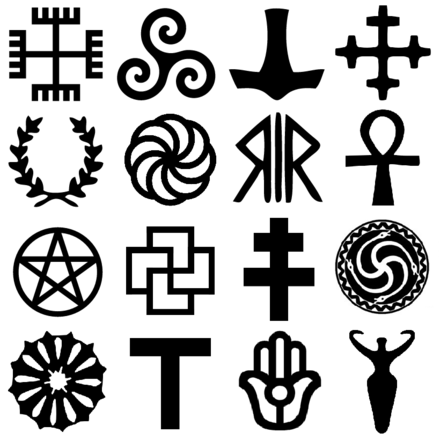“Atheists who believe that Jesus never existed (called mythicists) claim there are damning parallels between the story of Jesus and stories of other “dying and rising” gods. You’re likely to come across mythicist arguments through online videos such as Zeitgeist, which claims:
- The Egyptian god Horus “was born on December 25 of the virgin Isis-Meri . . . at the age of thirty he was baptized by a figure known as Anup and thus began his ministry. Horus had twelve disciples he traveled about with, performing miracles such as healing the sick and walking on water. . . . Horus was crucified, buried for three days, and thus, resurrected.”
- The Greek god Dionysus was “born of a virgin on December 25, was a traveling teacher who performed miracles such as turning water into wine.” Zeitgeist also claims that the Roman god Mithra was born of a virgin on December 25.
- Ancient pagan cults also worshiped the “Sun” by mourning when it dies in the winter and celebrating when it “rises” in the spring to bring forth new crops.
Although similarities among beliefs can be evidence that one culture was the source for another culture’s belief, in many other instances, it can lead to a bad case of “parallelomania.” Biblical scholar Samuel Sandmel says this happens when a person falsely believes that cultural borrowing has taken place and tries to prove it with highly implausible parallels. Straining to make connections, the “parallelomaniac” ignores more plausible explanations for why two different religions might have similar beliefs, stories, traditions, or customs.
In some cases, the imagined parallel simply doesn’t exist at all. In others, the alleged parallels are so trivial that they don’t really serve as evidence for culture-borrowing. Or it might, on closer inspection, turn out that the borrowing happened the other way around (e.g., paganism borrowing from Christianity). Or the borrowing might be real but related only to non-essential areas of belief.
When we apply these alternative explanations, we see that neither Catholicism nor Christianity can be explained as a mere offshoot of older pagan practices.
Many of Zeitgeist’s claims about ancient non-Christian religions simply aren’t true. There is no evidence the Egyptian god Horus was baptized, had twelve disciples, performed miracles like walking on water, or was crucified. In at least one instance, a deity that is supposed to parallel Jesus turns out never to have existed in pagan mythology. Zeitgeist claims that “Beddru” of Japan and “Crite” of Chaldea inspired the Jesus story, but there is no record of any deities by these names having a cult of worship.
Why would the producers of this film, or other mythicists, make up stuff like this? Odds are, they acted in good faith but uncritically followed older, amateur scholarship that had a bad habit of using poorly documented sources.
Many of their claims about Horus, for example, come straight from self-anointed (and long discredited) scholars from the nineteenth century, such as Gerald Massey. Contemporary Egyptologists do not trust his work today, and even Massey’s peers rejected his scholarship. The renowned British Museum Egyptologist Archibald Sayce, for instance, commended an 1888 article for its “through demolition of Mr. Massey’s crudities [and] errors.” His colleague Peter le Page Renouf said of Massey that “no lunatic could possibly write more wild rubbish” (1,101).
When we turn to anti-Catholicism, we see similar uncritical reliance on shoddy scholarship. This is evident in claims from Jack Chick tracts, such as, “The Holy Eucharist is placed in the center of a sunburst design called the monstrance. . . . Who dreamed this up? The Egyptians called it Osiris long before the popes called it Jesus.” Sure enough, Gerald Massey claimed that, in Egyptian worship, “flesh and beer were transelemented or transubstantiated by the descent of Ra the holy spirit” and that this sacrament was “continued by the Church of Rome.”
Chick further claims that the eucharistic host has the monogram IHS on it because in Egypt these letters stood for the gods Isis, Horus, and Seb. However, there is no evidence that ancient Egyptian religion had anything like the Eucharist, much less a host that included a monogram with the Latin letters IHS. (In reality, these three letters are often found on eucharistic hosts because they are derived from the first three letters of Jesus’ name in Greek.)
Another fiction is the claim that Nimrod and Semiramis were married Babylonian royalty who created a “proto-pagan Catholicism.” This isn’t possible, since, as modern scholars agree, they didn’t even live during the same period. Other claims, like “Catholic confessionals have a Babylonian origin,” ignore the historical reality that the Church practiced the sacrament of confession without confessionals for centuries. The regular practice of confessing privately to a priest in a reserved place was introduced into the Church through Irish missionaries in the early Middle Ages, not a Babylonian cult in late antiquity (CCC 1447).
In many cases, the alleged parallel between Christianity and paganism exists only in the creative mind of the parallelomaniac. In some other cases, though, the evidence from primary sources is accurate—and so a genuine parallel does exist—but the parallel is so trivial or general that it says nothing about any cultural borrowing. Ancient pagan deities, for example, may have performed miracles just as Jesus did, but we’d expect that any story about deities interacting with human beings would include miraculous details. So those similarities don’t suggest any borrowing.
Other alleged parallels are true only if you really strain your eyes and your reading comprehension. For example, mythicists say the Persian deity Mithra was born of a virgin (just like Jesus!), but the ancient source actually says that Mithra emerged fully grown from a rock (62). This is a “virgin birth” only in the most contorted sense of that term.
Similarly, that sun and son are homophones is true in English but not most other languages, including ancient languages like Greek or Hebrew. A similar error occurs in the identification of Easter with Ishtar (and honestly, the two sound similar only if you are prone to slurring your speech). Even more fatal to this alleged parallel is that nearly all European languages call the celebration of Christ’s resurrection a variant of the Latin word pascha. Christ is our new Passover (or paschal) lamb, as St. Paul describes him in 1 Corinthians. 5:7. (Easter comes from older Germanic words signifying springtime and the dawn.)
Modern scholarship has also shown that Christian and Catholic beliefs are primarily rooted in Judaism, not paganism. In his study on ancient resurrection belief, T.N.D. Mettinger put it this way:
There is, as far as I am aware, no prima facie evidence that the death and resurrection of Jesus is a mythological construct, drawing on myths and rites of the dying and rising gods of the surrounding world. While studied with profit against the background of Jewish resurrection belief, the faith in the death and resurrection of Jesus retains its unique character in the history of religions (221).
It’s reasonable to expect human beings in different eras and cultures to exhibit similar religious tendencies, because it’s in our nature. God created us to be religious. The Catechism puts it this way:
In many ways, throughout history down to the present day, men have given expression to their quest for God in their religious beliefs and behavior: in their prayers, sacrifices, rituals, meditations, and so forth. These forms of religious expression, despite the ambiguities they often bring with them, are so universal that one may well call man a religious being (28).
C.S. Lewis reached a similar conclusion when he said that God had revealed himself indirectly to pagans through their myths and that the Gospels were now God’s direct revelation. They were, as he said, “myth become fact.” I’ll close with his advice that shows that Catholics and Christians have nothing to fear from “pagan parallels”: “We must not be nervous about ‘parallels’ and ‘pagan Christs’: they ought to be there—it would be a stumbling block if they weren’t. We must not, in false spirituality, withhold our imaginative welcome” (59).”
Love and truth,
Matthew



